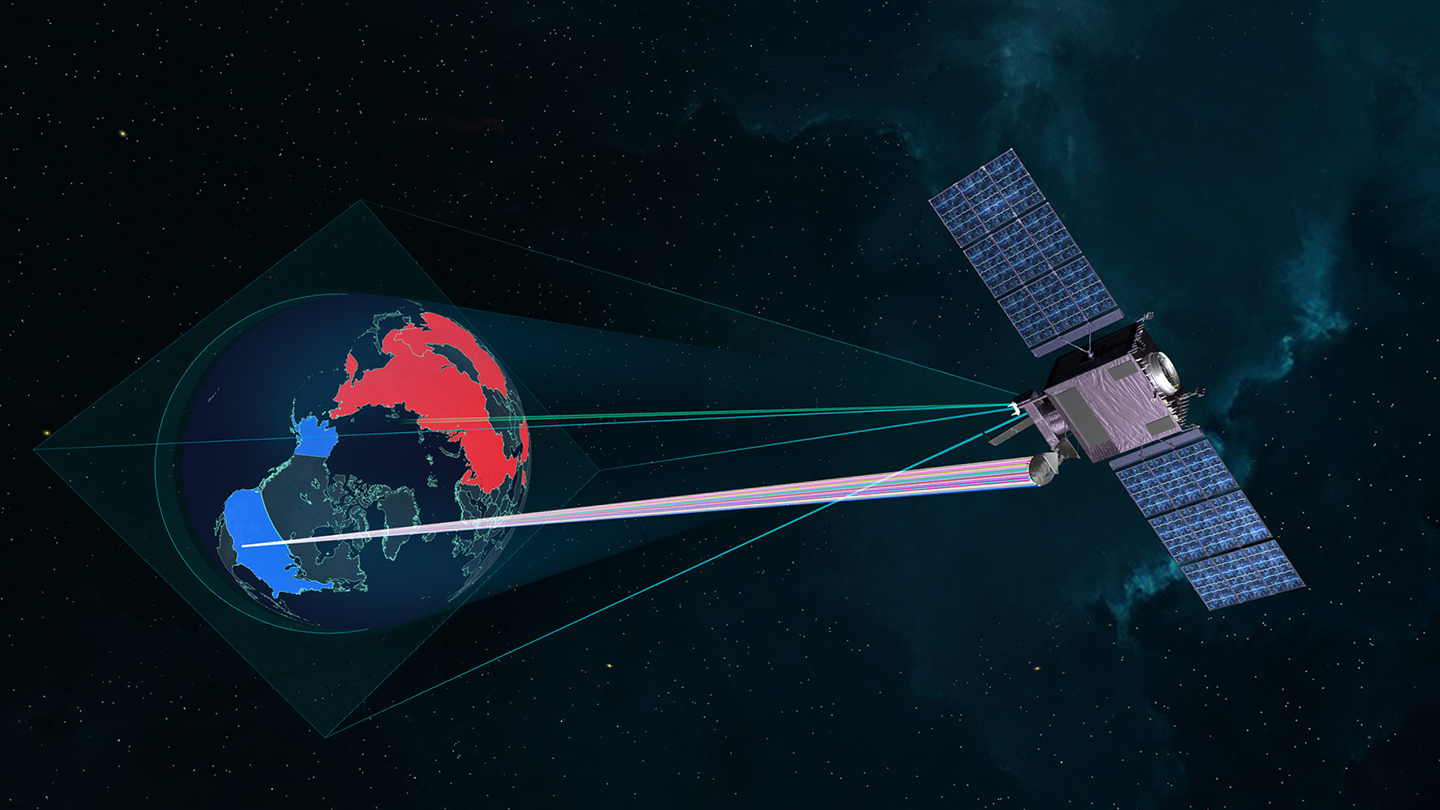When it comes to its search for UFOs, the Pentagon office charged with finding them says it has full access to U.S. government orbital imaging and early warning satellite products. The issue is that a lot of what’s being found turns out to be balloons. Additionally, video from multiple shootdowns of unidentified flying objects over North America earlier this year will be released.
The War Zone asked Sean Kirkpatrick, head of the Pentagon’s All-domain Anomaly Resolution Office (AARO) during a rare press briefing Tuesday the following query:
“Does AARO have access to US government orbital imaging and early warning satellite products? And if so, how many have captured UAPs?”
Kirkpatrick responded, stating “I have access to all the overhead imagery I need.” Despite access to those systems, however, Kirkpatrick said he has not “seen any of them that have collected [imagery of] a UAP,” the acronym for the term Unidentified Aerial Phenomena, which has replaced UFO in the halls of the Pentagon.

AARO has actually collected a lot of data from those satellite systems, but ultimately nothing that would suggest an otherworldly origin.
“We have collected lots of UAP that turned out to be balloons and those look nice,” he said.
There have been multiple allegations that classified orbital sensing systems have detected and imaged, in some cases in high detail, UAPs that are without immediate explanation. There have also been government documentation that appears to point to the possibility of UAP detection by classified orbital systems.
In January, the Office of the Director of National Intelligence (ODNI) issued a 12-page report saying that AARO was investigating 510 incidents and that its “initial analysis and characterization” of 366 newly-identified reports showed that more than half exhibited “unremarkable characteristics.”
Nearly half of those – 163 – were characterized as balloon or balloon-like entities.
Still, even balloons and other unidentified objects have caused problems. They became a huge issue earlier in February when a Chinese spy balloon traversed a large swath of the U.S. before being shot down off the coast of South Carolina.
The next week, U.S. fighters shot down a trio of UAPs in the course of three days in separate incidents over Alaska, Canada’s Yukon Territory, and Lake Huron.
Nearly nine months later, however, the Pentagon has yet to release any images or video of even one of the three events.
“Why does the DoD release footage from the same pods of intercepts of Chinese fighters but not unprecedented kinetic shoot downs over North America?” was our direct question to the AARO chief, which holds additional weight following the rapid release of video from the same (or very similar) U.S. military aircraft sensors used to show the recent unsafe intercept by a Chinese J-11 fighter of a B-52.
“Data release and footage is prioritized based on the geopolitical environment at the time,” Kirkpatrick told us. “So engagements with Chinese fighters, Russian fighters have a much larger priority in getting it through the review process or declassification than UAPs or other similar engagements.”
Efforts are underway to release some of the imagery collected during those February shootdowns, said Kirkpatrick.
“We are however, working through those processes, which all exist and we’ve got several of them actually already declassified and ready to update on our website [which] we’ll be doing on the next update to the website. And we’re putting them out as quickly as we can get them through their proper steps.”

Kirkpatrick offered no specific timeline, but explained the bureaucratic hoops that have to be jumped through.
“I think what is important for everyone to understand is the process for declassifying a video. Some of it is who owns the platform. So it’s not just I have to go to the DOD and ask for declassification. I have to go to the combatant command or the service that was operating that at the time. What operation was it doing when it engaged it? How do I then make sure that what we are declassifying doesn’t give away not just sources and methods, but also operational details? Why was this platform where it was? What was it looking at? You know, these are the kinds of questions that have to be answered by the operational commander, which is the combatant command in which those things occurred. And because they all are different, the process and timelines for getting each of these events declassified varies. And it will continue to vary until we can figure out a better way to do business.”
Another way to improve how AARO handles information about UAPs has been a Congressionally-mandated effort to change the way it handles reports about them from both the public as well as government employees and contractors.
The Pentagon called the press briefing to introduce its new secure reporting mechanism allowing current or former U.S. government employees, service members, or contractors with direct knowledge of alleged clandestine U.S. government programs or activities related to UAP dating back to 1945 to contact AARO to voluntarily submit a report.
Kirkpatrick explained that, unlike the current whistleblower process that goes through Inspector Generals’ offices, this website will give AARO the ability to directly investigate claims.

“The difference is I can’t investigate what they give to the IG because it will be wrapped up in whatever personnel complaints they put into that,” he said. “It’s a law enforcement piece of data. I don’t need to know any of that part. I just need to know about the programs so that I can research what they’re saying that program is.”
There is no huge rush of new information expected, said Kirkpatrick. Not only does he not know of any such clandestine programs, but even if there are any, not many people would be read into them.
Kirkpatrick touched on several other interesting points.
AARO is working to calibrate existing sensor platforms from military aircraft and Aegis radar systems against real-world conditions. For instance, what it looks like to observe a weather balloon at Mach 1.
The office is also looking at where its data gaps exist. There is plenty of data about missiles and planes and large objects, but not enough about smaller ones. This is something The War Zone has warned of for years.
Back in June, Kirkpatrick testified during a NASA hearing that AARO was developing its own “purpose-built sensors” to detect, track and characterize objects in suspected hot spots. You can watch that hearing in the video below.

Tuesday, he told reporters that “we have a couple of those already built and deployed. They then are calibrated against known objects, and we’re using them to do pattern-of-life analysis.”
Kirkpatrick also answered questions about David Grusch today. Grusch is the decorated intelligence official and Air Force veteran turned UFO whistleblower who in July claimed before Congress that “non-human intelligence” has visited the Earth and left behind craft and bodies. The government, Grusch testified, has covered up those incidents for nearly a century.
Grusch also testified that he briefed Kirkpatrick on his claims in July of 2022 and that Kirkpatrick never followed up. You can see that exchange in this video below.
Tuesday, Kirkpatrick said that Grusch has yet to respond to requests by AARO to meet and that the last time the two spoke was five years ago. Kirkpatrick said he was in the intelligence directorate of U.S. Space Command at the time and the conversation “was not on this topic.”
“I think we’ve interviewed most of the people that he may have talked to, but we don’t know that. And we have extended an invitation at least four or five times for him to come in over the last eight months or so, and has been declined.”
Citing privacy concerns, Kirkpatrick declined to offer any specifics about who he talked to or just what they said. He did, however, say that “I currently have no evidence of any program having ever existed to do any sort of reverse engineering of a sort of extraterrestrial UAP.”
As with so much about UAPs, those questions, like the one about when we will finally see February’s shootdown imagery, remain unanswered.
This, of course, is a tortured and often sensationalized topic full of many competing narratives and unsubstantiated claims. Kirkpatrick’s direct answers to these questions may be blown off by some, but he is at least now on the record in detailing exactly where he and the office he runs stands on them.
Contact the author: howard@thewarzone.com
